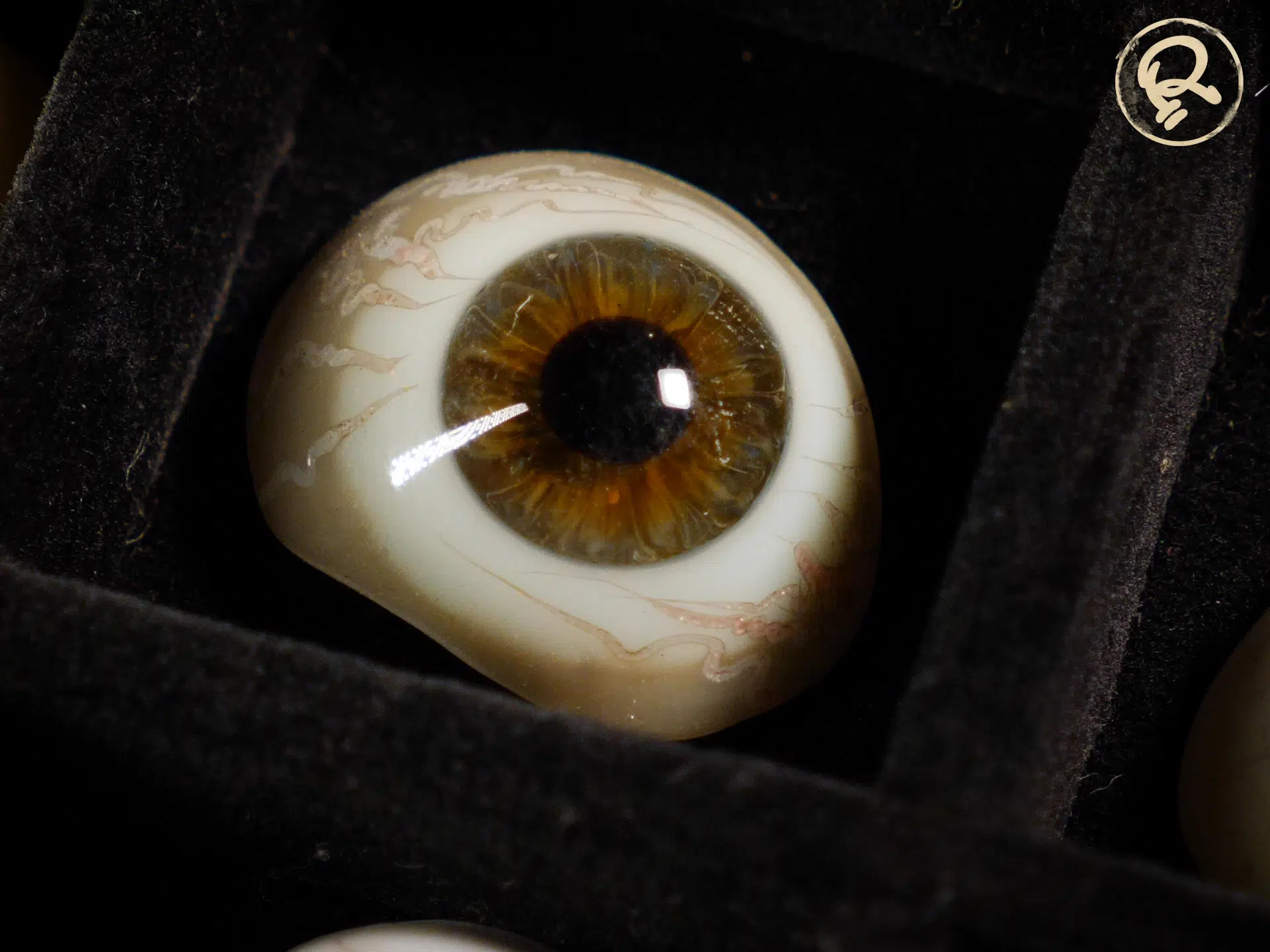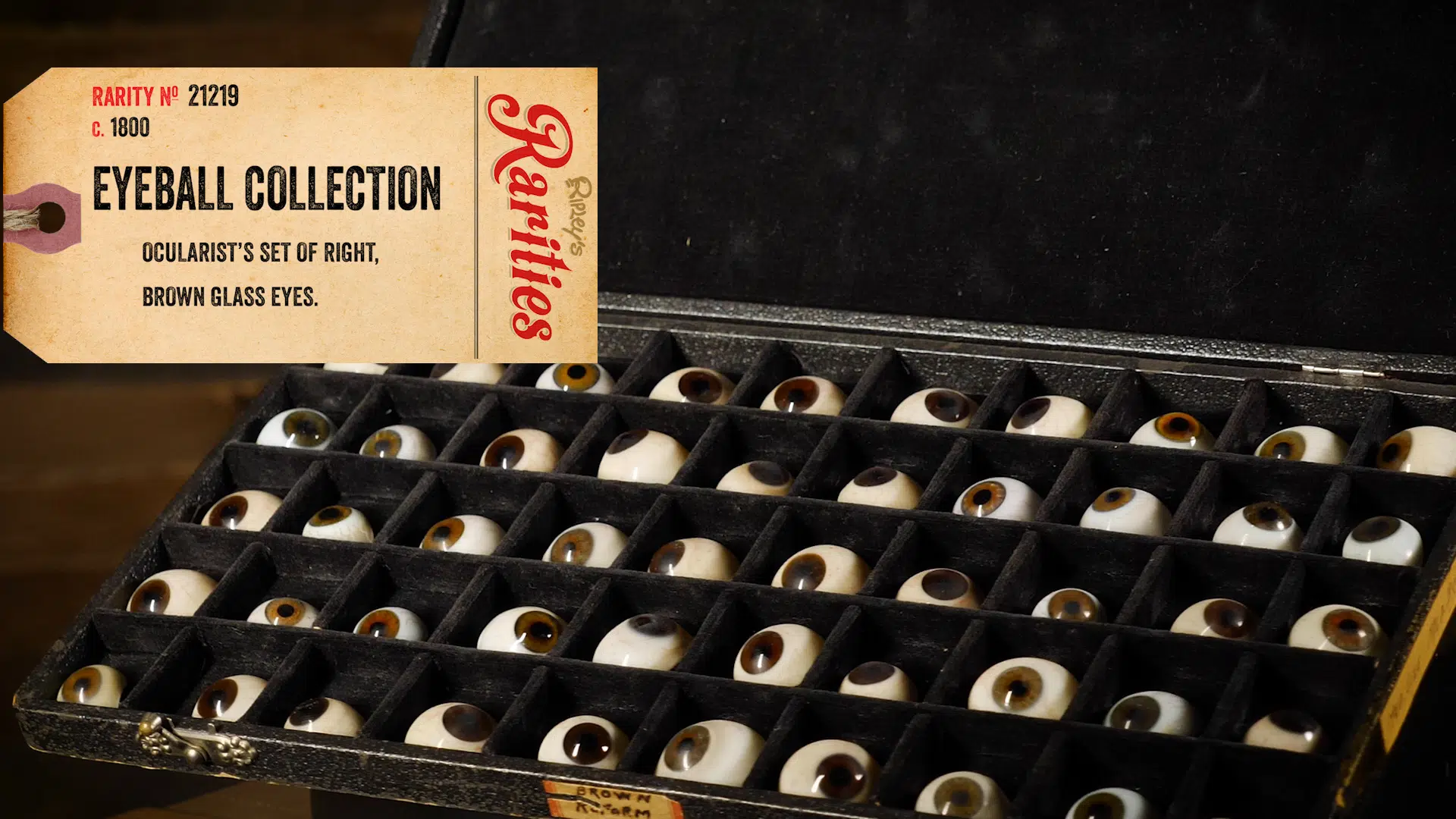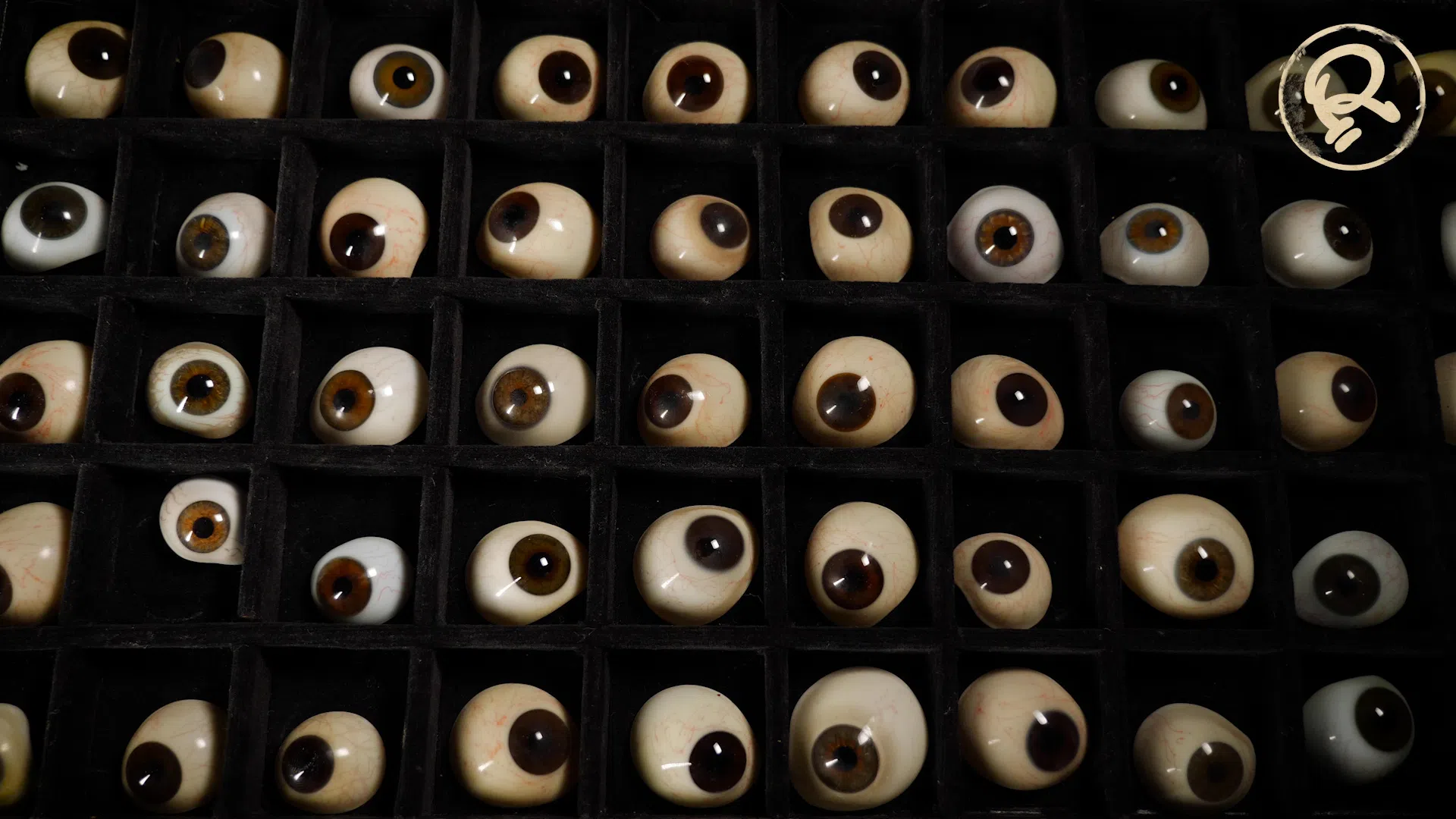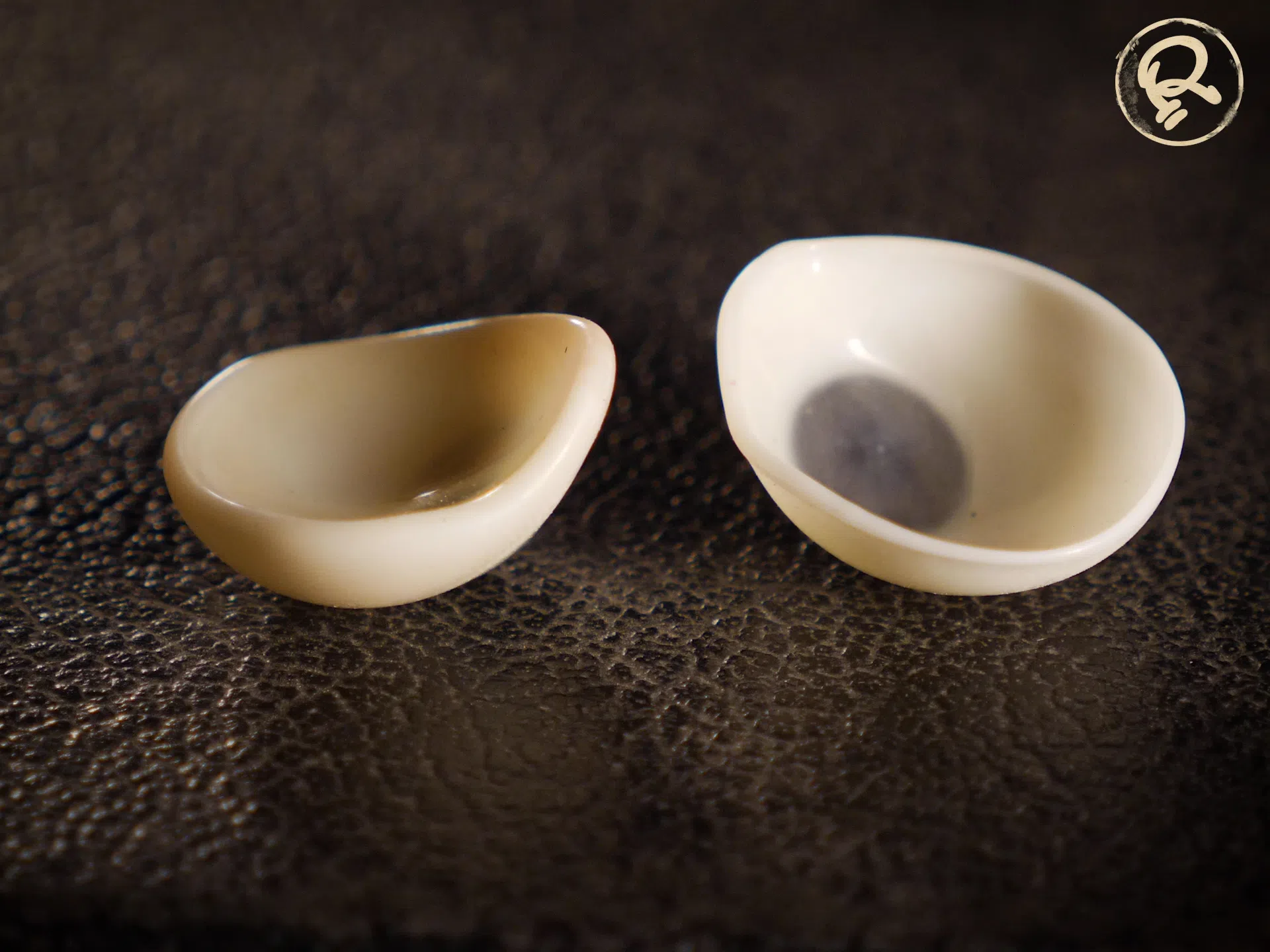
An Ocularist’s Glass Eyeball Collection
Featured in Ripley's Believe It or Not!

The first prosthetic eye is estimated to have been produced in the 29th-century B.C. The eye belonged to a woman in what is now Iran. Historians believe it was made using a waterproof paste, then covered in gold and engraved with a sunlike iris. Golden thread held the crude eye in place.
For millennia cultures used various forms of eyepatches—decorated or plain—to hide the disfigurement of a missing eye, but in the early 16th-century, Venetian glassmakers developed something new.






